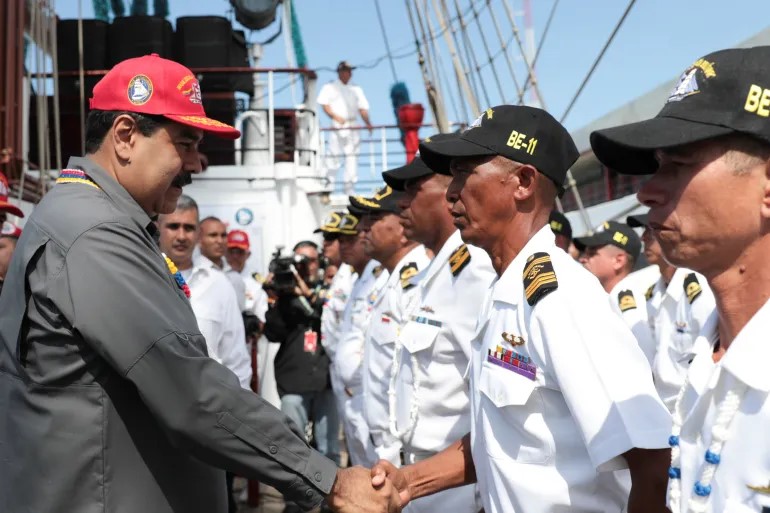
Venezuela Sends Warships, Drones to Coast as US Naval Squadron Approaches

 :
| Updated On: 27-Aug-2025 @ 9:10 am
:
| Updated On: 27-Aug-2025 @ 9:10 amSHARE
Venezuela is ramping up its military presence along the Caribbean coast as tensions with the United States continue to rise. Defence Minister Vladimir Padrino announced the deployment of naval vessels and drones to patrol territorial waters, describing the move as a “significant” strengthening of surveillance and defence operations. His statement, delivered via a video on social media, highlighted that larger ships would also patrol further north within Venezuelan waters.
The escalation follows the United States’ decision to deploy an amphibious squadron of three warships toward Venezuela last week, which Washington said was part of an anti-drug trafficking operation targeting Latin American cartels. Reports also confirm that two additional US vessels — a guided missile cruiser and a nuclear-powered fast-attack submarine — have been dispatched to the Caribbean. In total, the US has sent around 4,500 personnel, including 2,200 Marines, as part of this naval build-up.
The move by Washington comes after President Donald Trump’s administration accused Venezuela’s leftist leader Nicolás Maduro of being deeply involved in international cocaine trafficking. According to US officials, Maduro and his senior associates are linked to the so-called “Cartel de los Soles,” a trafficking network that Washington has labelled a terrorist organisation. To intensify pressure, the US doubled the bounty for Maduro’s capture or prosecution on drug charges from $25 million to $50 million, while also offering a $25 million reward for Interior Minister Diosdado Cabello.
Maduro has flatly denied the allegations, dismissing them as fabrications aimed at provoking regime change. He countered by accusing the US of hypocrisy, pointing to the widespread problem of drug consumption within its own borders. During a weekly television broadcast, Maduro insisted that Venezuela, unlike neighbouring Colombia, is entirely free of coca cultivation and cocaine production. He also mobilised hundreds of thousands of militia members across the country and dispatched around 15,000 troops to the Colombian border to combat criminal groups allegedly tied to drug trafficking.
Further asserting Venezuela’s anti-drug efforts, Defence Minister Padrino revealed that security forces had dismantled clandestine shipyards in the northeast, where criminals had been constructing semi-submersible vessels and boats intended for smuggling narcotics to Europe and North America.
Venezuela’s government has also taken the issue to the United Nations, denouncing what it described as the US’s “escalation of hostile actions and threats.” In a formal letter, Venezuelan diplomats warned that the presence of American warships — particularly a nuclear-powered submarine — posed a grave threat to regional peace and security. They demanded guarantees that the US would not deploy or threaten the use of nuclear weapons in the Caribbean.
Despite the dramatic military build-up, many analysts believe the risk of a direct US invasion or military strike remains low. Experts suggest Washington’s moves are more likely designed to increase pressure on Caracas, stir unease within Maduro’s government, and possibly force concessions at the negotiating table. Venezuelan citizens, too, appear largely unconcerned, with many dismissing the US manoeuvres as political posturing.
Maduro, who secured a controversial third term in the disputed 2024 elections, has long been in Washington’s crosshairs. Yet, despite years of sanctions, including an oil embargo and a “maximum pressure” policy, the Trump administration has failed to remove him from power. Analysts argue that the latest naval escalation is another attempt to weaken his hold by amplifying domestic and international pressure.